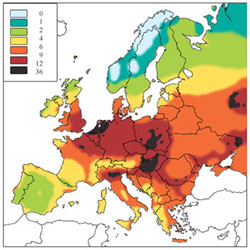The roads ahead
On may 24th, the Dutch Transport Ministry held a meeting called Societal Chances for In-car Technology, at the test circuit of the Dutch national road traffic service.
Some 200 representatives from the automotive industry, politicians, policymakers, consultants and still others met in Lelystad to gather the latest on in-car technology and hear about preliminary results of three roads to the future programs, a scheme set up by the transport ministry to kickstart innovations in Dutch traffic. The focus of these programs seems to be on road safety and congestion mitigation, with environmental issues coming a distant third. This is in line with some recent valuation exercises, which put much more economical value on safety and jam-busting than on environmental gains, a phenomenon on which I hope to comment soon.
Photographs of the event can be viewed here, link courtesy of the dispuut verkeer, a topical Dutch student´s association.
During the afternoon, there was the opportunity for all present to experience in-car technology themselves during test runs on and around the circuit.
Some of my impressions of the day:
It is clear that national as well as European authorities, more than before, take a keen interest in the private-sector development of technology and instruments to combat mobility-related problems. In my opinion, this can either indicate that those governments have become exasperated with trying to fix things themselves, or reflect a broader privatisation and liberalisation trend. And maybe those two arguments are essentially one, too.
It looks like governments are counting more and more on private businesses to help achieve public goals. Maybe that´s just as well, or, in the words of a noted proponent of public-private partnerships: ´what matters is what works´.
In the eyes of many, a lot of roads to the future run through the private domain. Transport-related industries are right to feel challenged.
Christof

